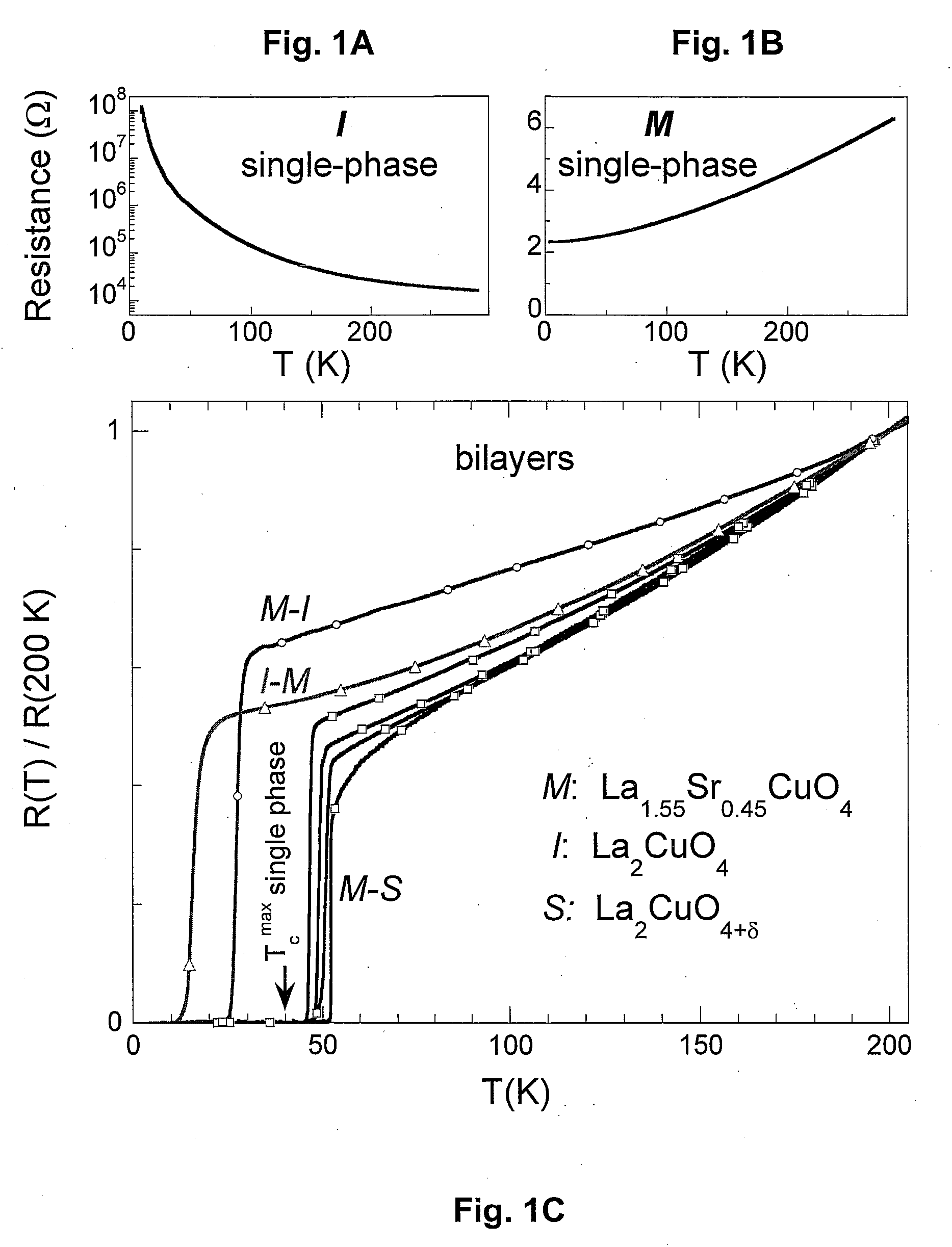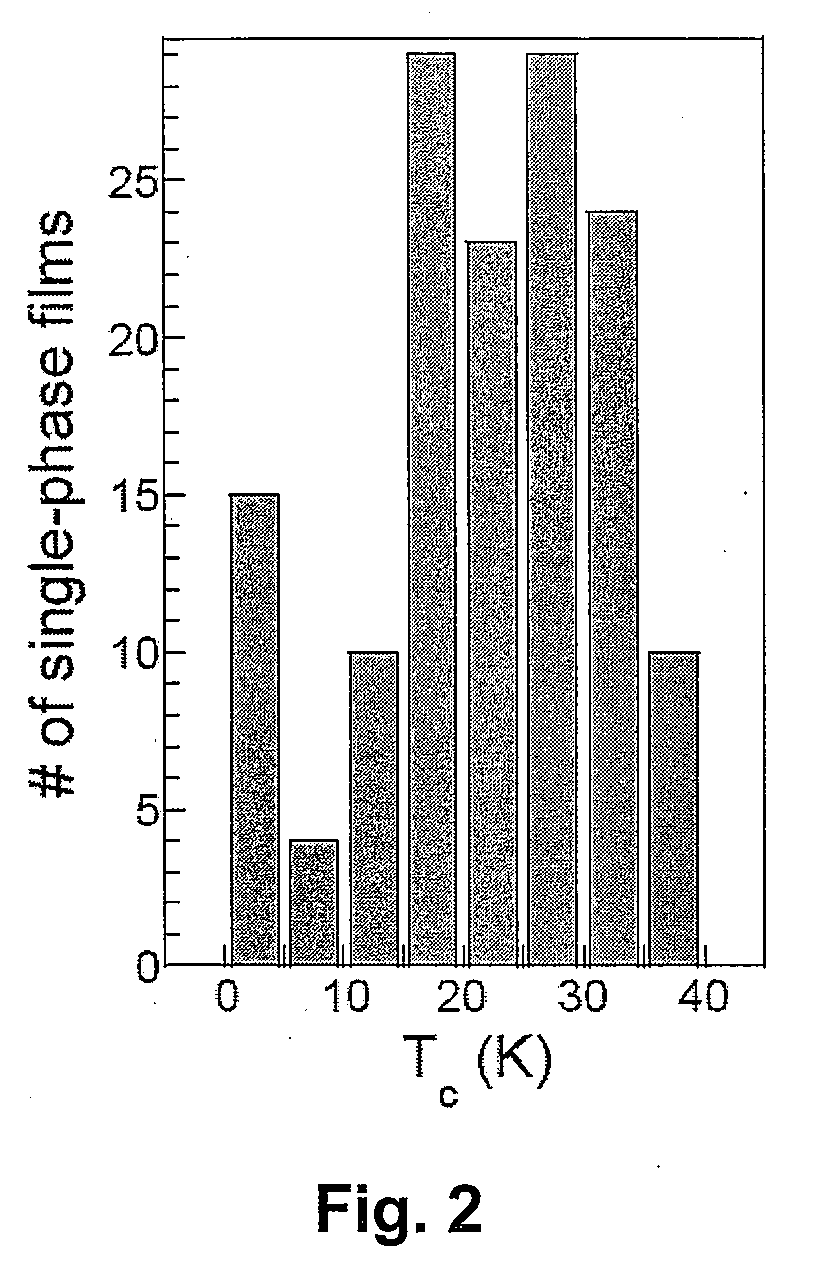High Temperature Interfacial Superconductivity
a superconductivity and high temperature technology, applied in the field of interfacial superconductivity, can solve the problems of conflicting challenges in the ale of hts materials, limited success in the development of commercially viable electronic devices and integrated circuits which utilize hts materials, and enhanced interdiffusion at film interfaces, so as to achieve heightened superconducting transition temperatures
- Summary
- Abstract
- Description
- Claims
- Application Information
AI Technical Summary
Benefits of technology
Problems solved by technology
Method used
Image
Examples
Embodiment Construction
[0041]The above and other objectives of the invention will become more apparent from the following description and illustrative embodiments which are described in detail with reference to the accompanying drawings. Similar elements in each figure are designated by like reference numbers and, hence, subsequent detailed descriptions thereof may be omitted for brevity. In the interest of clarity, the following terms and acronyms are defined as provided below.
DEFINITIONS
[0042]Adatom: An atom located on the surface of an underlying substrate.[0043]Atomically Sharp Generally used to characterize a transition from one material to another. When a transition from one layer to another is atomically sharp, the transition occurs abruptly on an atomic scale. This means that there is no concentration gradient or gradual transition between the two layers. Atomically abrupt is synonymous with atomically sharp.[0044]Bilayer: Two layers of different materials with arbitrary thicknesses which are stac...
PUM
| Property | Measurement | Unit |
|---|---|---|
| surface roughness | aaaaa | aaaaa |
| surface roughness | aaaaa | aaaaa |
| Tc | aaaaa | aaaaa |
Abstract
Description
Claims
Application Information
 Login to View More
Login to View More - R&D
- Intellectual Property
- Life Sciences
- Materials
- Tech Scout
- Unparalleled Data Quality
- Higher Quality Content
- 60% Fewer Hallucinations
Browse by: Latest US Patents, China's latest patents, Technical Efficacy Thesaurus, Application Domain, Technology Topic, Popular Technical Reports.
© 2025 PatSnap. All rights reserved.Legal|Privacy policy|Modern Slavery Act Transparency Statement|Sitemap|About US| Contact US: help@patsnap.com



